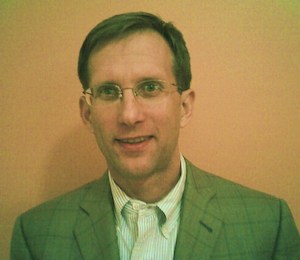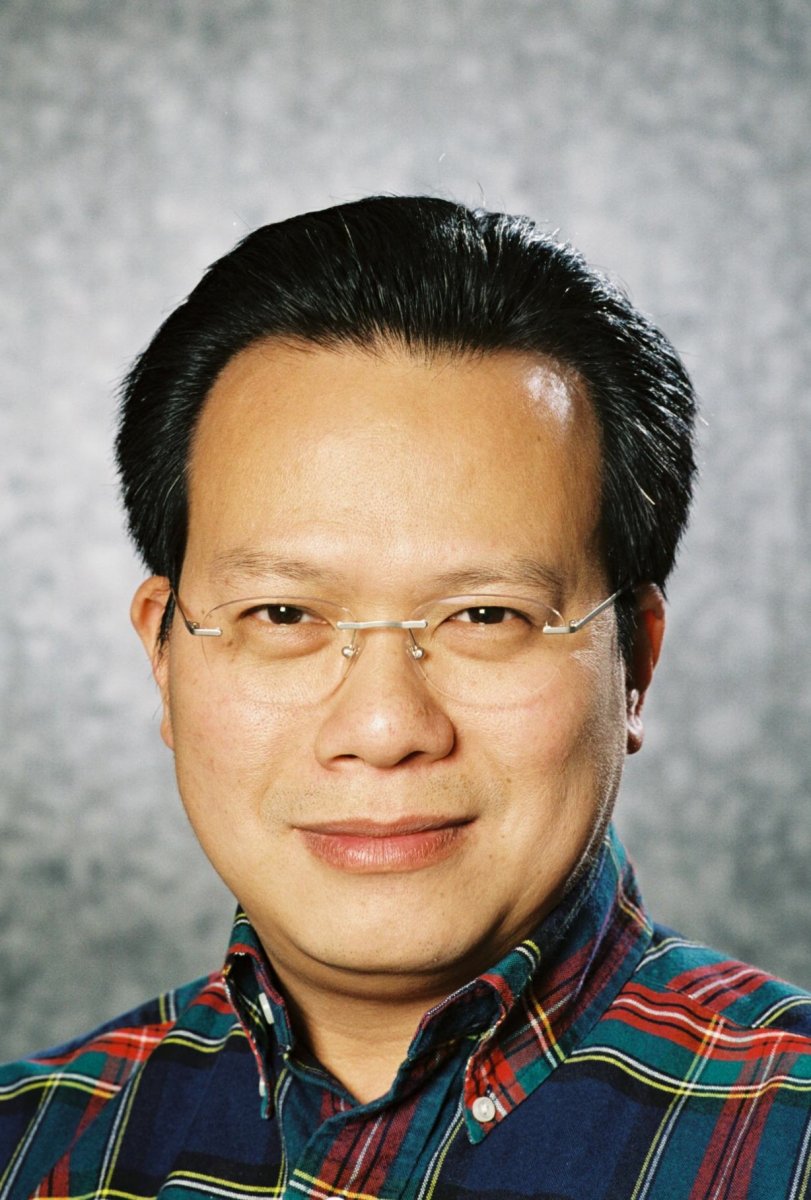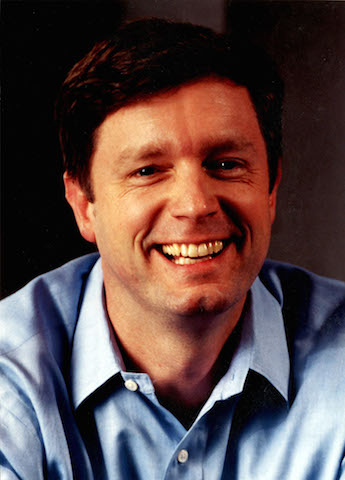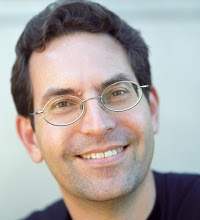 The tech, law enforcement, and privacy worlds are abuzz with the recent decision by Apple to refuse to help the FBI crack the security on an iPhone, even though the iPhone in question belonged to an alleged terrorist/mass murderer. As fascinating and important as that story is, I was even more interested in another cybersecurity story, about a hospital paying ransom to hackers in order to regain access to its own computer systems. This was not the first such occurrence, and it won't be the last.
The tech, law enforcement, and privacy worlds are abuzz with the recent decision by Apple to refuse to help the FBI crack the security on an iPhone, even though the iPhone in question belonged to an alleged terrorist/mass murderer. As fascinating and important as that story is, I was even more interested in another cybersecurity story, about a hospital paying ransom to hackers in order to regain access to its own computer systems. This was not the first such occurrence, and it won't be the last.
News
A Primer on the Open Source Movement from a Health Care Perspective
 Open source, in myriad forms, has emerged as a significant development model that drives both innovation and technological dispersion. Ignore it at your peril, as did the major computer companies destroyed or totally remade by Linux and free software, or encyclopedia publishers by Wikipedia, or journalists and marketers by social media. The term "open source" was associated first with free software, but it goes far beyond software now. People around the world use open hardware, demand open government, share open data, and--yes--pursue open health. The field of health, in particular, will be transformed by open source principles in software, in research, in consultations and telemedicine, and in the various forms of data sharing all these processes call for.
Open source, in myriad forms, has emerged as a significant development model that drives both innovation and technological dispersion. Ignore it at your peril, as did the major computer companies destroyed or totally remade by Linux and free software, or encyclopedia publishers by Wikipedia, or journalists and marketers by social media. The term "open source" was associated first with free software, but it goes far beyond software now. People around the world use open hardware, demand open government, share open data, and--yes--pursue open health. The field of health, in particular, will be transformed by open source principles in software, in research, in consultations and telemedicine, and in the various forms of data sharing all these processes call for.
- Login to post comments
- Feature Story
The Patient-Data Pipeline: The Missing Juncture of Flow and Connectivity in Healthcare IT Systems
 Part of today’s complexity in healthcare stems from the way our healthcare IT systems have emerged. There are multiple entry points for patients into the healthcare system, from a relationship with a primary care physician to the sporadic, disconnected and random interaction with emergency departments, urgent care and wellness clinics. Based on current technology and the overall nature of the beast, it is highly doubtful that a single point of entry into the healthcare delivery system will ever occur and is actually less important than the quality and cost of the care delivered. The key is the understanding of how patients’ data flows through healthcare IT systems and building an infrastructure that optimizes that flow of data and information.
Part of today’s complexity in healthcare stems from the way our healthcare IT systems have emerged. There are multiple entry points for patients into the healthcare system, from a relationship with a primary care physician to the sporadic, disconnected and random interaction with emergency departments, urgent care and wellness clinics. Based on current technology and the overall nature of the beast, it is highly doubtful that a single point of entry into the healthcare delivery system will ever occur and is actually less important than the quality and cost of the care delivered. The key is the understanding of how patients’ data flows through healthcare IT systems and building an infrastructure that optimizes that flow of data and information.
- Login to post comments
- Feature Story
So...Is Paying Ransom What Bitcoin Is For?
- Login to post comments
- News
Are CMS' Efforts Too Little and Too Late to Save the Collapsing US Rural Healthcare System?
 With 35 percent of rural hospitals losing money and almost two-thirds running a negative operating margin, there’s simply no way rural facilities can invest in health IT without help...It’s clear that CMS understands we can’t leave rural hospitals to fend for themselves. But it also seems clear that a lot of hospitals invested in electronic health records (EHRs) they could ill afford to qualify for Meaningful Use funds—dollars that seldom covered implementation costs for solutions that didn’t yield significant cost savings and required additional technical personnel...“The high capital and operating costs associated with health IT, specifically EHRs, have put some hospitals in a difficult position,” wrote Becker’s Hospital CFO in a prescient January 2014 article. “Do they absorb the financial hit now, even if they know they can't afford it? Most organizations are doing so …”
With 35 percent of rural hospitals losing money and almost two-thirds running a negative operating margin, there’s simply no way rural facilities can invest in health IT without help...It’s clear that CMS understands we can’t leave rural hospitals to fend for themselves. But it also seems clear that a lot of hospitals invested in electronic health records (EHRs) they could ill afford to qualify for Meaningful Use funds—dollars that seldom covered implementation costs for solutions that didn’t yield significant cost savings and required additional technical personnel...“The high capital and operating costs associated with health IT, specifically EHRs, have put some hospitals in a difficult position,” wrote Becker’s Hospital CFO in a prescient January 2014 article. “Do they absorb the financial hit now, even if they know they can't afford it? Most organizations are doing so …”
- Login to post comments
- News
Angular.js Versus the Cult of Health IT Complication
 Last week, I mentioned some of the cutting edge software technologies we use at MedicaSoft that many of the giants in non-healthcare industries also use. I thought this week I’d delve a little deeper into one of those technologies – Angular.js. There are many reasons to use Angular. At MedicaSoft, we use it to improve the speed of our development process. Angular enables us to develop and build features quickly and get changes in front of our clinicians for more of their feedback, resulting in less time in between product builds and releases.
Last week, I mentioned some of the cutting edge software technologies we use at MedicaSoft that many of the giants in non-healthcare industries also use. I thought this week I’d delve a little deeper into one of those technologies – Angular.js. There are many reasons to use Angular. At MedicaSoft, we use it to improve the speed of our development process. Angular enables us to develop and build features quickly and get changes in front of our clinicians for more of their feedback, resulting in less time in between product builds and releases.
- Login to post comments
- News
Halamka on Enabling Nationwide Interoperability
 ...recently, the ONC Interoperability Roadmap, recognizing that the building blocks of universal interoperability could not be so neatly erected, leans on the idea of “coordinated governance” of networks. While these frameworks have paid homage to the concept of nationwide network as a “network of networks”, we have yet to crisply define the stitching needed to form this nationwide network quilt. This issue hasn’t been so pressing up until now because there were relatively few networks – the “last mile” problem was the bigger concern. Network formation is evolving rapidly, however, which has made more pressing the question of what it means to connect networks in a uniform way.
...recently, the ONC Interoperability Roadmap, recognizing that the building blocks of universal interoperability could not be so neatly erected, leans on the idea of “coordinated governance” of networks. While these frameworks have paid homage to the concept of nationwide network as a “network of networks”, we have yet to crisply define the stitching needed to form this nationwide network quilt. This issue hasn’t been so pressing up until now because there were relatively few networks – the “last mile” problem was the bigger concern. Network formation is evolving rapidly, however, which has made more pressing the question of what it means to connect networks in a uniform way.
- Login to post comments
- News
OSEHRA Community Responds to the VA's RFI for eHMP Agile Development Contract Strategy
 In recent days, OSEHRA Community Members have enthusiastically collaborated to develop a response to VA’s Request for Information (RFI) for a contract strategy that is suitable for agile development of Enterprise Health Management Platform (eHMP). I would like to thank more than 50 members who contributed in developing the final document that OSEHRA submitted today on behalf of the community. Many members participated in community discussions, shared documents, and provided great ideas. We hope that our response accurately presents the depth and breath of expertise and commitment to excellence that has been shown by the OSEHRA Community.
In recent days, OSEHRA Community Members have enthusiastically collaborated to develop a response to VA’s Request for Information (RFI) for a contract strategy that is suitable for agile development of Enterprise Health Management Platform (eHMP). I would like to thank more than 50 members who contributed in developing the final document that OSEHRA submitted today on behalf of the community. Many members participated in community discussions, shared documents, and provided great ideas. We hope that our response accurately presents the depth and breath of expertise and commitment to excellence that has been shown by the OSEHRA Community.
- Login to post comments
- News
Test-Driven Development With FHIR
 While preparing for, and participating in, the recent FHIR Connectathon 11 held in Orlando, Florida, yet another benefit of FHIR’s implementer-friendly philosophy became apparent to me – the ability to facilitate Test-Driven Development (TDD). TDD has been defined as “a software development process that relies on the repetition of a very short development cycle: first the developer writes an (initially failing) automated test case that defines a desired improvement or new function, then produces the minimum amount of code to pass that test, and finally refactors the new code to acceptable standards.” Dating back to 2003, TDD is now considered by many developers to represent the state of their art – shining some much-needed light on the darkness might be another way of looking at it!
While preparing for, and participating in, the recent FHIR Connectathon 11 held in Orlando, Florida, yet another benefit of FHIR’s implementer-friendly philosophy became apparent to me – the ability to facilitate Test-Driven Development (TDD). TDD has been defined as “a software development process that relies on the repetition of a very short development cycle: first the developer writes an (initially failing) automated test case that defines a desired improvement or new function, then produces the minimum amount of code to pass that test, and finally refactors the new code to acceptable standards.” Dating back to 2003, TDD is now considered by many developers to represent the state of their art – shining some much-needed light on the darkness might be another way of looking at it!
- Login to post comments
- News
Hacking the Farm with Low-Cost, Open Source Tool Designs
 After starting his own farm in Missouri, Marcin Jakubowski quickly discovered it's an expensive business. The tools he needed to start and maintain a sustainable farm didn't exist, so he set out to design them himself. Marcin published a collection of his open source designs, called the Global Village Construction Set, to the Open Source Ecology wiki. Soon, just as in open source software, others from around the world began to collaborate with him in designing these new machines. According to the wiki, "Global Village Construction Set is a modular, DIY, low-cost, high-performance platform that enables fabrication of the 50 different industrial machines that it takes to build a small, sustainable civilization with modern comforts...
After starting his own farm in Missouri, Marcin Jakubowski quickly discovered it's an expensive business. The tools he needed to start and maintain a sustainable farm didn't exist, so he set out to design them himself. Marcin published a collection of his open source designs, called the Global Village Construction Set, to the Open Source Ecology wiki. Soon, just as in open source software, others from around the world began to collaborate with him in designing these new machines. According to the wiki, "Global Village Construction Set is a modular, DIY, low-cost, high-performance platform that enables fabrication of the 50 different industrial machines that it takes to build a small, sustainable civilization with modern comforts...
- Login to post comments
- News
11 Steps To Running An Online Community Meeting
 Open organizations explicitly invite participation from external communities, because these organizations know their products and programs are world class only if they include a variety of perspectives at all phases of development. Liaising with and assisting those communities is critical. And community calls are my favorite method for interacting with stakeholders both inside and outside an organization. In this article, I'll share best practices for community calls and talk a little about how they can spur growth...
Open organizations explicitly invite participation from external communities, because these organizations know their products and programs are world class only if they include a variety of perspectives at all phases of development. Liaising with and assisting those communities is critical. And community calls are my favorite method for interacting with stakeholders both inside and outside an organization. In this article, I'll share best practices for community calls and talk a little about how they can spur growth...
- Login to post comments
- News